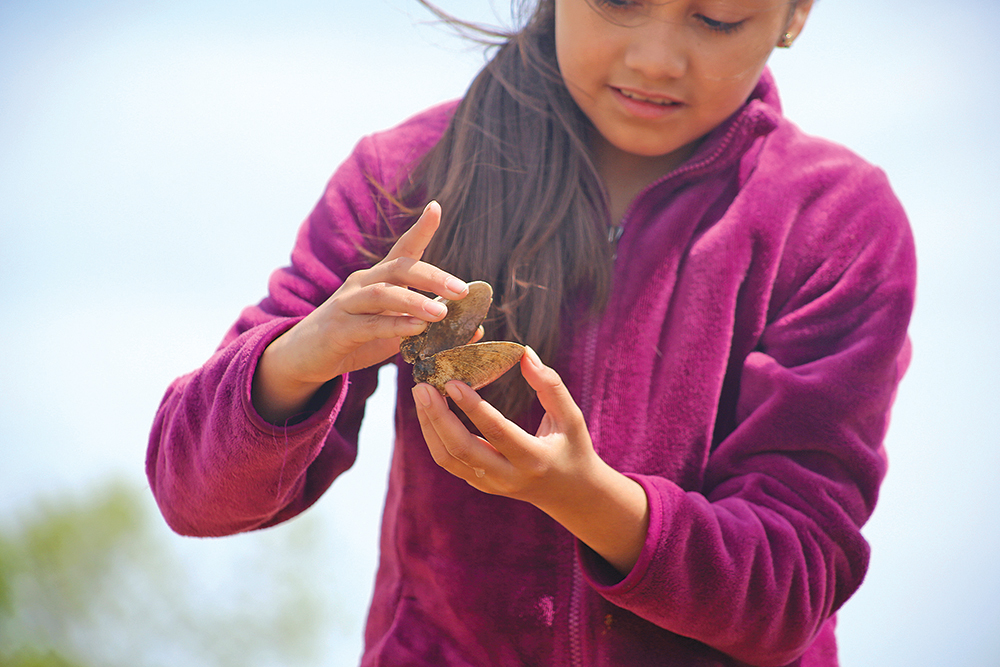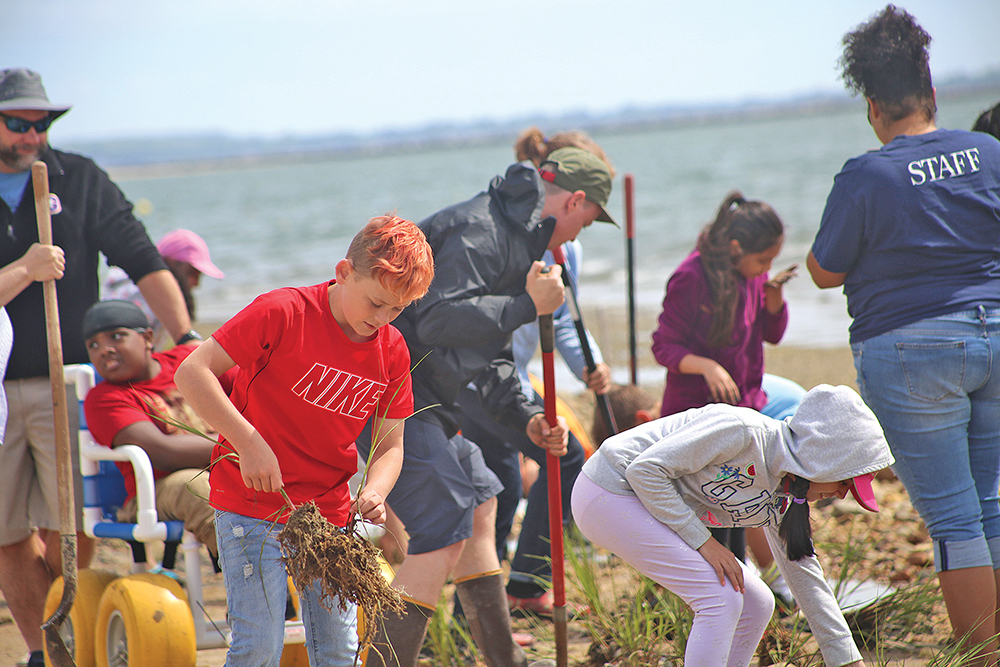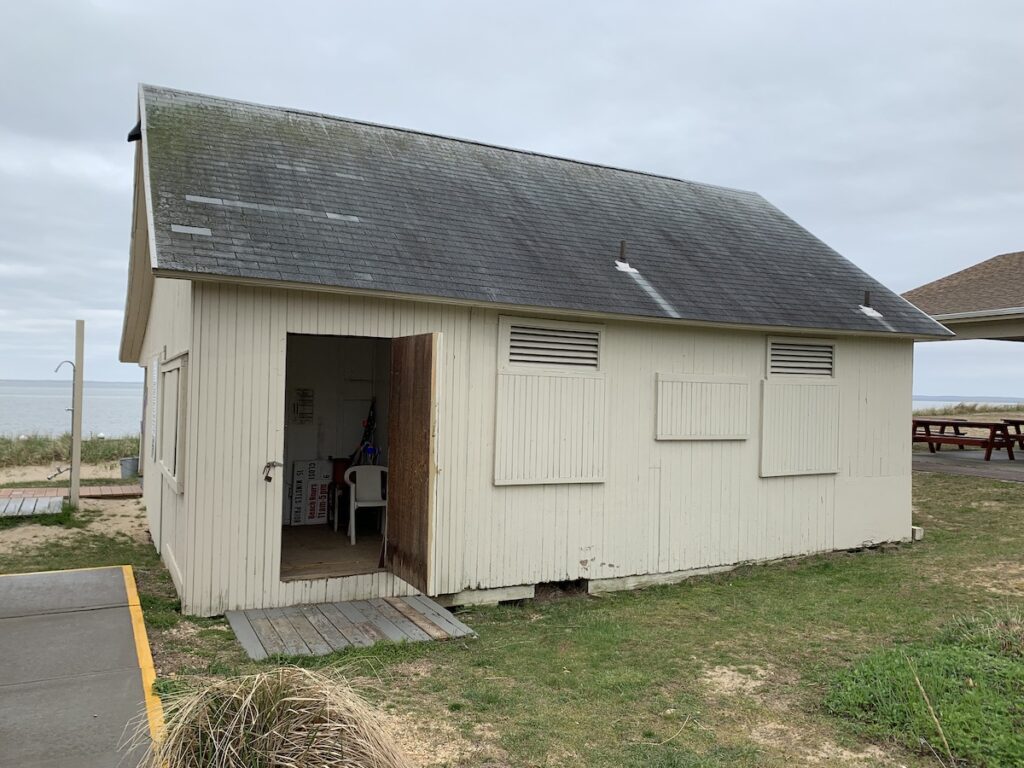Final phase of living shoreline project underway in Greenport

Five years in the making, Peconic Estuary Program’s first living shoreline is coming to fruition as Greenport Elementary School students gathered Monday with representatives of community organizations to complete the project’s final planting phase.
Members of Peconic Land Trust, the Peconic Estuary Program and Cornell Cooperative Extension of Suffolk County came together at Widows Hole Preserve in Greenport to convene with fifth-graders about strengthening the shoreline and preventing runoff and erosion.
The site, located south of Clark Street and east of Fourth Street, is owned by Peconic Land Trust. The estuary program and Cornell Cooperative Extension are working with the land trust to help create various living shorelines in different types of coastal landscapes, monitor them and assess their effectiveness for coastal resiliency.
“This was the first in a national program that came to our attention through the corporate counsel of the Land Trust Alliance,” said Timothy Caufield, senior advisor of conservation programs for Peconic Land Trust. “Nationally, there’s an outreach effort to connect with large corporations and help them become more aware of conservation opportunities. Exxon did the very first one, where they donated this to us and they donated an easement to the town.”
Exxon also donated a portion of the project’s funding.
Denise Markut, the land trust’s senior manager of stewardship, coordinated the organization’s school programs. “I’ve been working with Ms. [Stephanie] Pawlik for three to four years now,” she said. “Every fall and every spring, she brings her fifth-grade class… This is giving kids something to do, a hands-on project, a visceral thing.”

Students experienced an “outdoor classroom,” learning and helping plant Spartina grasses below the high tide line as part of a habitat restoration effort. Given that Spartina plants have extensive root systems, they are capable of stabilizing the shoreline and filtering out nutrients and pollutants before entering the bay via land runoff, Dr. Joyce Novak, director of the Peconic Estuary Program, said in an email.
“We are setting this area up for an improved habitat, for shellfish, for sea animals, birds,” said Matt Swain, Peconic Land Trust’s director of stewardship & geographic information systems.
The effort enhances the shoreline naturally, protecting it from storm surges and the negative effects of bulkheads and rock walls. With sea level rise, for example, cutting off a shoreline with a vertical wall, like a bulkhead, may seem like a great idea, but doing so can prevent animals and plants that are offshore from moving up shore. This can threaten their ability to survive, according to Stephen Schott, marine botany/habitat restoration specialist for Cornell Cooperative Extension.
“After Hurricane Sandy, what people discovered was that manmade structures don’t stand up very well to Mother Nature, especially when she’s pretty fierce,” he said. “And they’re extremely expensive to replace. These living shoreline concepts basically are going back to Mother Nature. She perfected this for thousands of years and it’s worked, so we’re basically just going back to it.”
The team will be working on the upland area in October, and the project will be maintained over the next few years. Any storm or animal damage will be tended to through the replanting of materials collected from local marshes.
Representatives spoke highly of the project’s educational and volunteer components. Involvement makes community members feel like stakeholders and often encourages them to follow up and remain active, Mr. Schott said.
Ms. Pawlik, the fifth-grade teacher who helped coordinate the program, said, “When we study human impact on the environment … we tend to focus on the negative impacts that humans have had. I noticed over time — I’ve taught in Greenport for 30 years — I’ve noticed that children know less and less about the shoreline. My motivation for coming here was purely based on having them be able to identify species, be able to pick up a shell and know what it was and what organism it was. They look like they’re playing right now, but they’re really in the art of discovery.”
Photo caption: Greenport Elementary School fifth-graders work with members of Peconic Land Trust, Peconic Estuary Program and Cornell Cooperative Extension of Suffolk County Monday to help strengthen a portion of the estuary’s shoreline at Widows Hole Preserve in Greenport. (Credit: Mahreen Khan)









